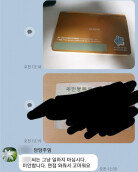In America, Chinese Americans Are Thriving
In America, Chinese Americans Are Thriving
Posted March. 03, 2009 03:35,
Scene I
Unlike Korean immigrants, who usually run stores on a lease, their Chinese rivals chip in to buy stores together. Thats why many blocks are turning into Chinatowns in the U.S. (Kim Dong-suk, director of the Korean-American Voter Center of New York and New Jersey)
The Flushing area of the New York City borough of Queens used to have a strong Korean-American commercial presence. That is no longer the case.
With no Korean signs to be found anywhere, Chinese stores now thrive in the streets. Even Flushings city council member is a Chinese American.
Scene II
Deerfield High School in Massachusetts is located two hours away from Boston, surrounded by beautiful suburban scenery. The school is one of the top five boarding schools in the U.S. Despite annual tuition of more than 40,000 U.S. dollars, middle schoolers from all over the world compete to get in.
On the last day of the Lunar New Years holidays in Korea Jan. 27, 20 Chinese middle school students and their parents stepped off a bus in front of Deerfields admissions office. The trip was included in their tour of top boarding schools in the U.S. Northeast.
After attending a presentation on the admissions process by a Chinese-American employee, they toured the campus. The number of Chinese applicants to top private high schools in Massachusetts and Connecticut, two states that are often described as the incubators for future leaders of America, has been on a sharp rise.
Chinese Americans have recently made great advances in the U.S.
U.S. President Barack Obama appointed former Washington State Governor Gary Locke as commerce secretary last week. Locke is the second Asian American to be named to Obamas Cabinet, following Energy Secretary nominee Stephen Chu.
Elaine Chao, a Taiwanese immigrant, served as labor secretary under the previous Bush administration for eight years.
Chinese Americans are also known for their stellar performance in school.
With the help of University of Texas professor Lee Gil-sik, The Dong-A Ilbo surveyed the nationalities of National Merit Scholarship students in 2007.
The scholarship is an academic scholarship competition. The Pre-Scholastic Aptitude Test is used to initially screen entrants, whose number exceeded 1.5 million in 2007. Among them, 16,000 were selected as semifinalists.
After categorizing 115 semifinalists from three public schools in Plano, Texas, by their surnames, around 30 to 40 of them were thought to be of Chinese origin. Only three had surnames indicating Korean ethnicity.
In the past, Korean students used to be number one in academic performance. They are now increasingly challenged by the Chinese, professor Lee said.
In Orange County, California, which has a large Korean-American population, Chinese-American seventh graders who took the California Achievement Test in 2007 scored 85 in English and 90 in mathematics on average, higher than their Korean-American counterparts (77 and 85, respectively).
Though Koreans account for the largest foreign student group in the U.S., the number of Chinese-American students is surpassing that of Korean Americans at top U.S. universities. Many experts interpret such statistics as the result of the sudden rise in Chinese immigration that began in the mid to late 1980s
There are 3.53 million Chinese immigrants living in America, accounting for 1.2 percent of the U.S. population. Korean immigrants comprise half a percent with 1.55 million.
The political influence of Chinese Americans has rapidly grown on the back of their rising population in the U.S. and their economic power.
Chinese Americans tell themselves to forget where they came from, said director Kim. Just like the Jews did in the past, there is an active tradition of fundraising in which many Chinese-American small business owners chip in small sums of money.
sechepa@donga.com higgledy@donga.com







